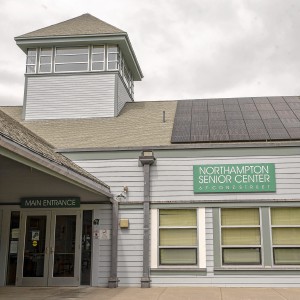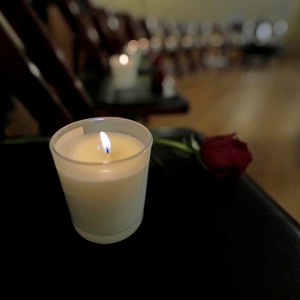Columnist Tolley M. Jones: Windows and mirrors: A mermaid with locs matters
| Published: 06-08-2023 11:00 AM |
How long was it before you, as a child, saw someone who looked like you on television or in a movie, or read a book with a protagonist who looked like you?
If you are white, it was probably so long ago that you don’t even remember, and it was probably so often that it was unremarkable to you. American media has always reflected the images and experiences of white people.
I grew up in predominantly white Enfield, Connecticut, and I do remember where I first saw myself reflected on a screen. “Sesame Street” was a rare window of time when I regularly saw strong Black adult characters and children who looked like me. There was Gordon, Susan, little John-John, and even a little Black girl who skips to the store trying to remember “A loaf of bread, a container of milk, and a stick of butt-ah.”
These are core memories for me, and if you watch old episodes of “Sesame Street” you will see the creators’ commitment to having a diverse cast and content. But this was rare in media at the time, so much so that it was considered groundbreaking.
Even though I was an early and avid reader, I rarely encountered a Black protagonist in the books I was reading as a child. I don’t recall ever seeing a picture book with Black children (and flipping through the books I have that survived my very early childhood, I see only blond white children represented), and when I try to remember any Black characters in my favorite early chapter books, I only remember being surprised when the Ingalls family contracts malaria and is treated by a Black doctor in the book “Little House on the Prairie.”
For me, the surprise was twofold: first, that there was a serious, educated Black character in a series that also includes an entire white town entertaining themselves with blackface minstrel shows that mock and characterize Black people as being entertainingly stupid; and second, that there was such a thing as a Black doctor, because I myself had never seen one.
Last September, Disney dropped the trailer of their new live-action movie “The Little Mermaid,” which surprised everyone with a Black Ariel as protagonist and star of the show, played by Halle Bailey. Soon there were videos surfacing of little Black children watching the trailer for the first time, capturing their stunned and thrilled reactions to seeing themselves represented in an already-beloved character.
Video after video online show a Black child watching Ariel swimming into the frame, her locs flowing behind her as she sings “wish I could be part of their world.” And in every video, the child’s expression changes from interested, to shocked, then to excited when they realize that Ariel is Black. More than one of them turn to their parents and say, “She’s Black?!” or “She looks like me!”
Article continues after...
Yesterday's Most Read Articles
 South Hadley’s Lauren Marjanski signs National Letter of Intent to play soccer at Siena College
South Hadley’s Lauren Marjanski signs National Letter of Intent to play soccer at Siena College
 LightHouse Holyoke to buy Gateway City Arts, expand offerings and enrollment at alternative school
LightHouse Holyoke to buy Gateway City Arts, expand offerings and enrollment at alternative school
 Treehouse, Big Brothers Big Sisters turn race schedule snafu into positive
Treehouse, Big Brothers Big Sisters turn race schedule snafu into positive
 South Hadley man fatally shot in attempted robbery
South Hadley man fatally shot in attempted robbery
 Granby man admits guilt, gets 2½ years in vehicular homicide
Granby man admits guilt, gets 2½ years in vehicular homicide
 Area briefs: Transhealth to celebrate 3 year; Holyoke to plant tree at museum; Documentary film about reparations focus of Unitarian talk
Area briefs: Transhealth to celebrate 3 year; Holyoke to plant tree at museum; Documentary film about reparations focus of Unitarian talk
No matter how young of a toddler the Black child is, you can see from their instant of recognition that they are already fully aware that they do not see themselves portrayed like that very often.
Rudine Sims Bishop is an educator and author who taught about the concept of “windows, mirrors, and sliding-glass doors” in reference to the importance of multicultural books and literature in children’s lives.
Books provide windows for children to be able to look through to see others’ lives and experiences, and also should provide a mirror so readers can see themselves reflected, as they build their self-image. A lack of “windows” in literature for white children means that without the opportunity to see other people’s lives, experiences, and cultures, those children grow up thinking that the world is centered on their own culture and experiences.
And when brown and Black children read books that lack diversity and representation, the lack of mirrors provided in those monochromatic experiences detrimentally impact the self-esteem and confidence of those children. Bishop writes, “When children cannot find themselves reflected in the books they read, or when the images they see are distorted, negative, or laughable, they learn a powerful lesson about how they are devalued in the society of which they are a part.”
Statistically, children’s literature is centered on the white child’s experiences and culture, rather than reflective of the variety of cultures that actually exist. According to the Cooperative Children’s Book Center in the School of Education at the University of Wisconsin-Madison, only 14% of the children and young adult books they received for review in 2022 were about Black/African people and experiences [Books by and/or about Black, Indigenous and People of Color (All Years) — Cooperative Children’s Book Center (wisc.edu)].
This means that it is imperative that adults make deliberate efforts to seek out and promote literature and stories that allow Black and brown children to see themselves as relevant, and that give white children the chance to learn that the world is a much more colorful and diverse world. When the number of windows and doors available are limited, adults must support, and advocate for, access to those for all children.
Disney’s “The Little Mermaid” is currently second on the box office charts this weekend (June 4) and was No. 1 on opening day. It made $117 million in its first weekend.
Despite the disquieting negative uproar about Ariel being a Black character (unsurprisingly from the same group of people who are angry about American children learning the truth about this country’s history while also furious about LGBTQ+ children and families being supported and about everyone else learning that they exist, the box office numbers do not lie.
Clearly, both white and Black Americans want diversity in media, books, and in the libraries where children go to learn about their world. Americans do understand that representation matters! After all, if a fictional mermaid can be Black, maybe a doctor can be Black, too.
At theaters across the country, Black and white children excitedly dressed up as mermaids to see a Black Ariel, and all of their worldviews expanded. And the Black parents who accompanied their children sat next to them in theaters across the country, smiling into the mirror that was not there when they were small.
Tolley M. Jones lives in Easthampton. She writes a monthly column for the Gazette. She can be reached at columnist@gazettenet.com.

 Guest columnist Jena Schwartz: Things I have not said
Guest columnist Jena Schwartz: Things I have not said Wendy Parrish: Northampton Volunteer Fair
Wendy Parrish: Northampton Volunteer Fair Guest columnist Rob Okun: Still No. 1 in male mass shootings 25 years after Columbine
Guest columnist Rob Okun: Still No. 1 in male mass shootings 25 years after Columbine Guest columnist Oriel Strong: Think impossible thoughts
Guest columnist Oriel Strong: Think impossible thoughts
